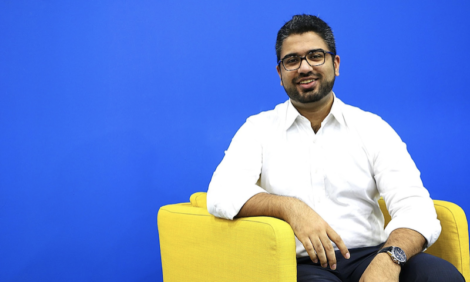
Building a digital-first retail logistics business with Xero and Talenox

Driven by the rise of smartphones and growing internet penetration, the burgeoning middle class in Asia is making more eCommerce purchases than ever. The 2016 and 2017 Google-Temasek reports projected a US$200 billion internet economy in the region by 2025. The 2018 report, however, placed that number even higher, at US$240 billion — an increase of 20%.
Asia boasts some of the most eager shoppers in the world. They’ll buy everything from household products and makeup to bags and tools online. But at the same time, many have experienced the frustration of unreliable shipping.
Even in Singapore, one of the world’s most advanced cities, last-mile fulfilment tends to challenge online retailers most. Customers must set aside a specific block of time to physically receive their package, delivery is late, or they must pick up their package at a nearby post office. Traditional logistics offer customers zero transparency and peace of mind because of silos and being labour-intensive.
You can usually complete an online purchase in under ten minutes. So why is it that the delivery process can take days (for domestic) or weeks (for international)? This is the conundrum that Singaporean startup blu aims to solve.
Birth of blu
Prashant Dadlani, 28, is the founder of four-year-old logistics startup blu. While pursuing his degree at the Singapore Management University, he was inspired to build a network of self-service pick-up stations. This allows eCommerce shoppers to retrieve their purchases whenever, wherever.
“I noticed a glaring inertia in the way orders were delivered in Singapore,” he said in an interview with Asian Entrepreneur. “It often took days or even weeks for items to arrive. Apart from the wait, there were many complaints about delays and missed deliveries”.
“Seeing this as an anachronistic problem in a digital age, I founded blu to re-imagine the future of retail logistics. While logistics players make piecemeal tweaks, I focus on systemic innovation throughout the value chain to achieve greater efficiency”.
Surprisingly, Dadlani has a business and finance background, not a tech one. But his success shows that anyone can leverage new technology to build a digital-first business and use it to revitalise traditional industries.
“Logistics-focused online retail is small but growing rapidly,” he says. “That provides a lot of opportunities to transform and rethink the way consumers interact with brands and retailers. A tech-enabled logistics model underpins the future of how people will consume”.
Now, blu is appointed by the government as one of the two Locker Operators of the Federated Lockers and Collection Points Programme. It also works with logistics companies such as DHL and FedEx, so that parcels can be picked up at bluPort parcel lockers instead of being delivered to homes.

Going above and beyond
What sets blu apart is that it provides services beyond last-mile logistics by going higher up the retail value chain; these services range from order and inventory management to warehousing and order fulfilment. With such end-to-end integration, blu fulfil and deliver orders to a bluePort within a day.
This process is highly automatic. Retailers can achieve synergy and focus more on developing the best brand and customer experiences. And because bluPort is brand agnostic, any retailer or logistics service provider can leverage the expanding bluPort network to improve their operation workflows and reduce the cost of redeliveries.
blu’s competitors, whose offerings usually consist of manned collection points, would find it challenging to compete on security, 24/7 accessibility, and real-time proof of delivery.
Digital from day one
From the beginning, blu was established as a digital-first business, laying a strong operations foundation by adopting Xero for cloud accounting and Talenox for human resource management (HRM) services. In addition, they have also used ApprovalMax to increase the number of user permissions to ensure an even smoother workflow for its expanding crew size.
Xero provides Dadlani with a real-time view of the business. The platform’s instant reports give insights into all sorts of financial indicators. This helps the team manage everything from vendors and customers to costs and billing. Built-in reports have made Goods and Service Tax (GST) reporting a breeze by allowing managers to drill-down into individual transactions with ease.
“Some of my favourite features include bank feeds for easy bank reconciliation and foreign exchange rate integrations for automated posting. As well as tracking of foreign currency gains/losses and revaluations,” says Dadlani. “The automated recurring manual journals are also great for handling prepaid expenses. It’s also handy to email statements to customers with one-click”. It’s easy to keep track of transaction billing and ensure prompt payments with recurring bills and invoices as well as instant reports and statements.
These digital tools allow Dadlani to focus on strategy rather than data entry. On migrating from an ERP system, Dadlani shared, “ERP is more expensive but doesn’t necessarily equate to better efficiency and product fit”.
It’s a breeze to handle a full set of accounts within Xero with many one-click features and integrations. Multiple enterprise studies show digitalising manual processes can slash time spent on administrative work by over half.
The use of digital HRM services such as Talenox with its integration capability with Xero also speeds up workflows across different departments and makes data management and access simple.
Smart entrepreneurs are harnessing technology in a variety of ways to create change. The changes don’t always have to be industry-wide. Sometimes they are simple — like helping budding founders streamline their operations to achieve success within their organisations.
The post Building a digital-first retail logistics business with Xero and Talenox appeared first on Xero Blog.
Source: Xero Blog






